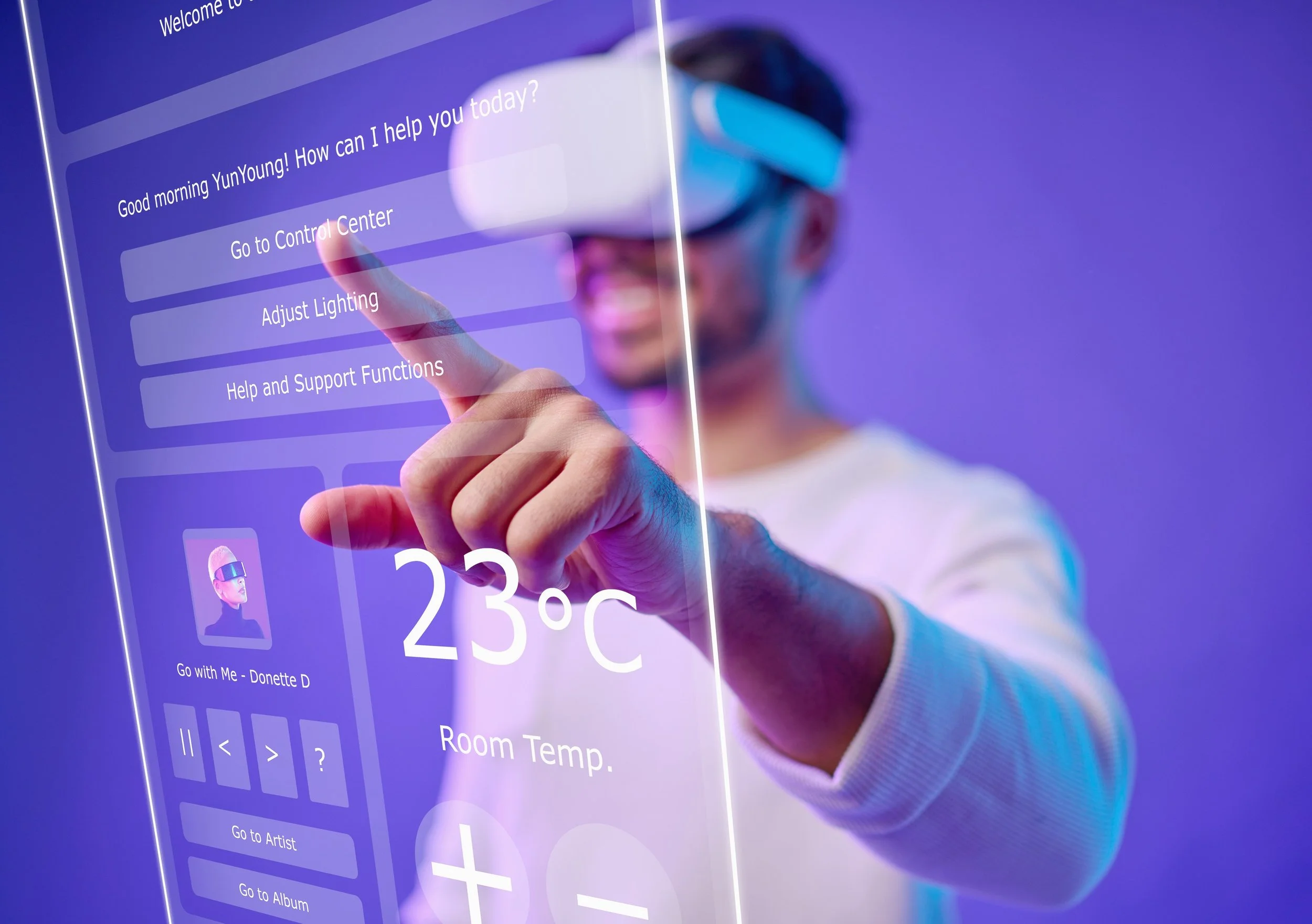Future UX Through AR
Abstract:
Augmented Reality (AR) is redefining how designers prototype, test, and present user experiences. By overlaying digital elements onto the physical world, AR allows designers to simulate interactions, visualize spatial interfaces, and gather user feedback in real-time environments. This article explores how AR is being used across UX/UI design, product development, and spatial computing to accelerate innovation. From rapid prototyping to immersive usability testing, AR is not just a visualization tool—it’s a bridge between concept and reality.
Keywords:
Augmented Reality, UX Design, Prototyping, Spatial Computing, User Testing, Product Development, AR Interfaces, Immersive Design, Interactive Experiences, Future of UX
Introduction:
In the past, prototyping digital experiences was limited to screens, wireframes, and static mockups. Today, Augmented Reality is breaking those boundaries. AR gives designers a new medium to visualize how users interact with physical and digital spaces simultaneously. Whether it's testing a smart home interface, simulating an in-store experience, or previewing a 3D product in real space, AR makes it possible to bring design concepts to life before anything is built. This immersive capability is rapidly transforming design workflows, enabling faster iteration, better collaboration, and deeper user insight.
1. Prototyping Interfaces Beyond the Screen
AR allows designers to move beyond 2D layouts and explore how users will engage with interfaces in the physical world. From heads-up displays to gesture-based controls, AR lets teams simulate how buttons, menus, and interactions appear in real contexts—on tables, walls, or wearable devices. This spatial prototyping helps identify usability issues early and ensures that interfaces are intuitive across different environments.
2. Real-Time User Testing in Real-World Settings
Traditional usability tests often occur in artificial lab environments. With AR, designers can conduct live, in-context testing. For instance, a retail app prototype can be tested directly in a store, or an industrial control interface can be simulated within a factory floor. Users interact with projected experiences, while designers gather insights on navigation, behavior, and emotional response. This level of realism helps teams refine designs more effectively and with greater confidence.
3. Enhancing Collaboration Across Teams
AR prototyping tools allow cross-functional teams—designers, developers, stakeholders—to view and interact with the same 3D concept at once. Whether using AR glasses or mobile devices, team members can co-experience a prototype in the same room or remotely. This boosts communication, shortens feedback loops, and helps non-technical stakeholders understand the product vision more clearly.
4. Accelerating Innovation in Product and UX Development
AR reduces the gap between imagination and implementation. By using tools like Adobe Aero, Unity, and Apple’s ARKit, designers can prototype and iterate faster, reducing development cycles and minimizing costly redesigns. Industries such as automotive, architecture, retail, and healthcare are already using AR to envision products and experiences before they’re built, saving time and enhancing final outcomes.
Conclusion:
Augmented Reality is no longer just an entertainment or marketing novelty—it’s becoming a critical tool in the designer’s toolkit. By enabling immersive prototyping, real-world testing, and spatial interaction, AR is helping shape the future of UX and product development. As the technology becomes more accessible, it will continue to transform how we imagine, test, and create digital experiences in the physical world.
Resources:
· Apple Developer – ARKit Overview:
https://developer.apple.com/augmented-reality/
· Unity – AR Development Tools:
https://unity.com/solutions/augmented-reality
· Adobe Aero – Create AR Experiences Without Code:
https://www.adobe.com/products/aero.html
· IKEA Studio App – AR in Interior Design:
https://www.space10.io/project/ikea-studio/
· Google ARCore – Build AR Experiences:
https://developers.google.com/ar

